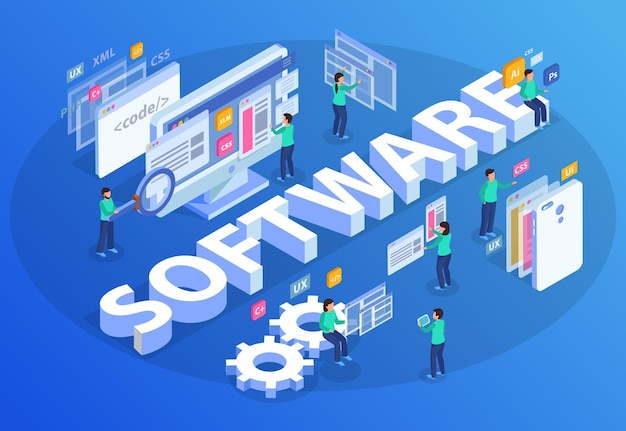The Process Of Gathering Requirements For Software Development
The procedure of collecting software development requirements may be a difficult one. It is important to have a clear understanding of what the software needs to do in order to meet the needs of the customer. The customer’s business goals and objectives should be taken into account, as well as their current technology infrastructure. Determining the right requirements upfront will help ensure that the software is developed efficiently and meets the needs of the customer.

Types of requirements
There are three types of requirements that need to be considered when gathering requirements for software development:
1. Functional requirements
Functional requirements are the specific actions that the software must be able to perform. These can be further broken down into sub-requirements, which detail how the functionality will be achieved.
2.Non-functional requirements
Non-functional requirements are concerned with the overall performance of the software. These can include aspects such as response time, reliability, and scalability.
3. Business rules
The business rules are the precise regulations that must be followed in order for the program to operate properly. These can be related to regulations, company policies, or industry standards.
Importance of requirement management
Any software development project requires a lot of planning and preparation time. One of the most important aspects of any software development project is requirement management. Having a clear understanding of the requirements upfront will help ensure that the project stays on track and meets the needs of the customer. Gathering requirements can be a time-consuming process, but it is essential to get it right in order to create a successful product. There are a variety of methods for gathering requirements. Interviews, surveys, focus groups, and workshops are just a few examples. It is important to choose the right method for each project, as some methods may work better than others depending on the type of requirement being gathered. The collection of requirements must be recorded and managed after they have been determined. This can be done using a requirements management tool, which can help to track and manage changes to the requirements over time.
Requirements Gathering steps for Software development
The process of gathering requirements for software development can be divided into a few steps:
1. Understanding the project scope
2. Identifying the stakeholders
3. Conducting requirement gathering techniques
4. Documenting the requirements
5. Validating the requirements
6. Managing changes to the requirements
7. Prioritizing the requirements
1. Understanding the project scope
The first step in gathering requirements is to understand the project scope. This includes understanding what the software needs to do and who will be using it. It is important to have a clear understanding of the project objectives before starting to gather requirements.
2. Identifying the stakeholders
The next step is to identify the stakeholders. These are the people who will be affected by the software and who have a vested interest in its success. It is important to involve the stakeholders in the requirements gathering process so that their needs can be taken into account.
3. Conducting requirement gathering techniques
There are a number of different techniques that can be used to gather requirements. Organizations may use many different types of communication in order to gather information. These can include interviews, focus groups, and training sessions. It is important to choose the right method for each project, as some methods may work better than others depending on the type of requirement being gathered.
4. Documenting the requirements
Once the requirements have been gathered, they need to be documented. This can be done using a requirements management tool, which can help to track and manage changes to the requirements over time.
5. Validating the requirements
After the requirements have been gathered and documented, they need to be validated. This can be done by conducting interviews with stakeholders or by performing usability testing.
6. Managing changes to the requirements
Once the requirements have been gathered and validated, it is important to manage changes to them. This can be done using a requirements management tool, which can help to track and manage changes to the requirements over time.
7. Prioritizing the requirements
The final step in gathering requirements is to prioritize the requirements. This can be done by using a requirements prioritization technique, such as MoSCoW or Kano. Prioritizing the requirements will help to ensure that the most important requirements are addressed first.

If you are working on a software development project, it is important to have a clear understanding of the requirements gathering process. After following the steps above, you should have a clear understanding of the requirements gathering process. Taking the time to gather the right requirements upfront will help ensure that your project is successful. If you need help with gathering requirements or any other aspect of software development, today. We can help you get started on your next project.
